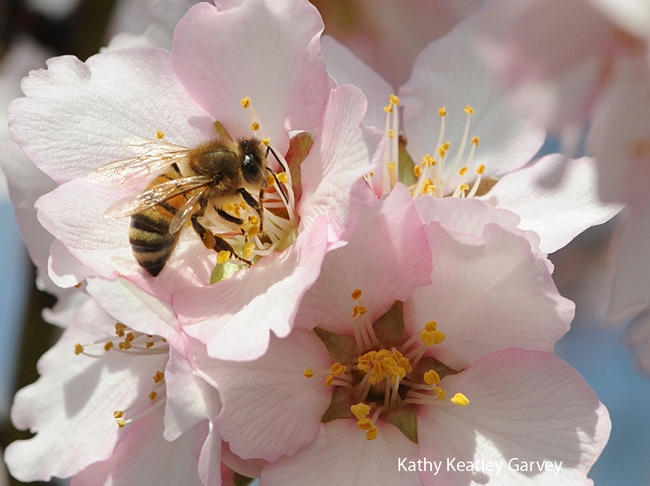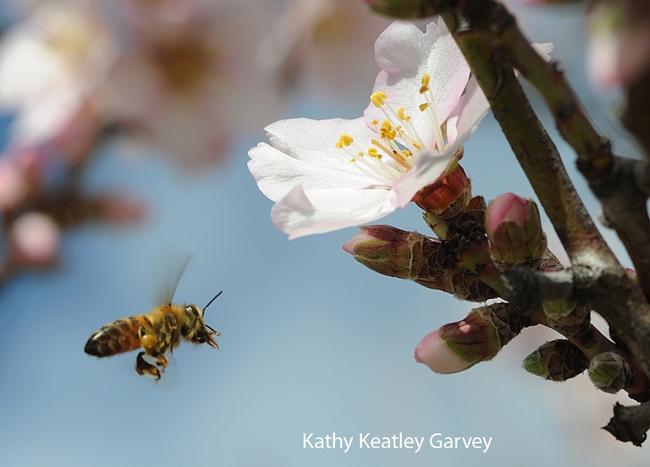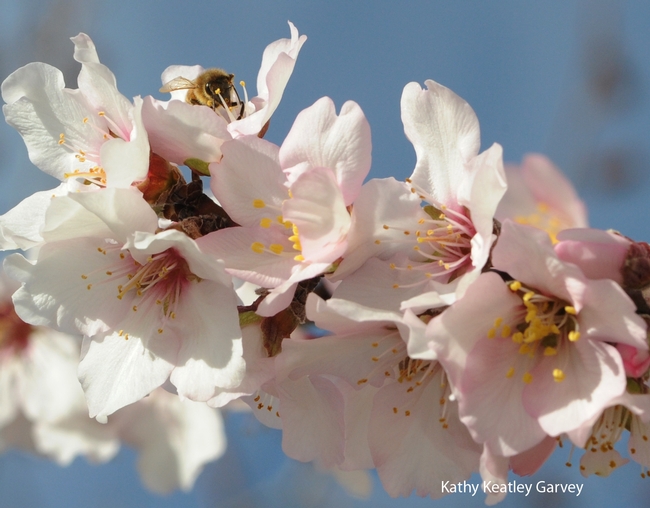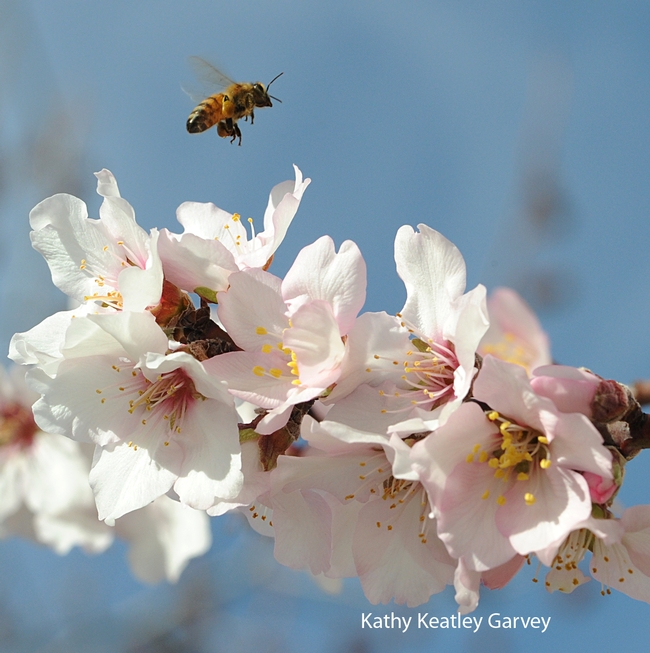"Almonds are one of the first crops of the season that need bee pollination," tweeted the Almond Board of California yesterday.
Valentine's Day traditionally marks the beginning of almond pollination season, but it's an early spring. The almonds are blooming and the bees are buzzing.
So, first the tweets, then the buzzes.
CNN Money, New York, came out Feb. 7 with a news story headlined "Honeybee Die-Off Shouldn't Sting." The Almond Board linked to it in its tweet.
The piece, written by Steve Hargreaves, explored the "good news and bad news on the honeybee beat."
Hargreaves said that colony collapse disorder (CCD) continues to claim about 30 percent of the nation's bees every winter. That's the bad news. The good news, he said, is that "beekeepers have been able to rejuvenate their hives each year so that by summer, the population is back to previous levels."
And "another bit of good news," Hargreaves pointed out, is that although agricultural yields are rising and "rejuvenating beehives is costly," the higher costs aren't being transferred in the supermarket.
Hargreaves quoted UC Davis agricultural economist Daniel Sumner as saying "It shouldn't be a significant item on the radar screen of consumers. It's not that big of a deal."
So, there you have it. Bees are in trouble. Almond production is up (about 750,000 acres in California and each acre requires two hives for pollination). And, demand for almonds is up. California now produces 80 percent of the world's almonds.
Meanwhile, honey bee guru and Extension apiculturist Eric Mussen of the UC Davis Department of Entomology, is repeatedly asked "How are the bees doing?" He writes a bi-monthly from the UC Apiaries newsletter and the periodic Bee Briefs, both posted on the Department of Entomology website.
Mussen attributes CCD (a mysterious malady characterized by adult bees abandoning the hive) to a combination of factors, including parasites, pesticides, pests, diseases, malnutrition and stress.
It continues to amaze us, however, what some folks think is causing CCD. They're looking for a silver bullet. There is none.
The arguments can get ugly. As debates continue to rage in the CNN Money commentary section, one reader, obviously exasperated, posted "...the writers in this place don't know anything about the realms of science, economics or ecology. And 90 percent of the posters aren't very bright, either."
Meanwhile, the bees are busy pollinating almonds.
Attached Images:

Honey bee pollinating almonds in Vacaville. (Photo by Kathy Keatley Garvey)

Honey bee cleaning her tongue as she heads for the next blossom. (Photo by Kathy Keatley Garvey)

Peek-a-bee. (Photo by Kathy Keatley Garvey)

Up, up and away. (Photo by Kathy Keatley Garvey)